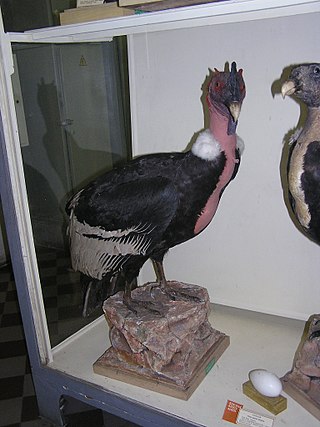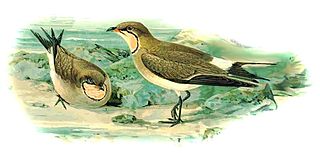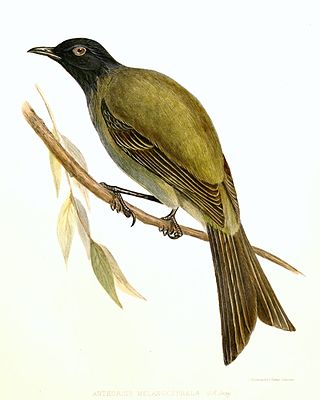
William John Swainson FLS, FRS, was an English ornithologist, malacologist, conchologist, entomologist, and artist.

John Gould was an English ornithologist who published monographs on birds, illustrated by plates produced by his wife, Elizabeth Gould, and several other artists, including Edward Lear, Henry Constantine Richter, Joseph Wolf and William Matthew Hart. He has been considered the father of bird study in Australia and the Gould League in Australia is named after him. His identification of the birds now nicknamed "Darwin's finches" played a role in the inception of Darwin's theory of evolution by natural selection. Gould's work is referenced in Charles Darwin's book, On the Origin of Species.
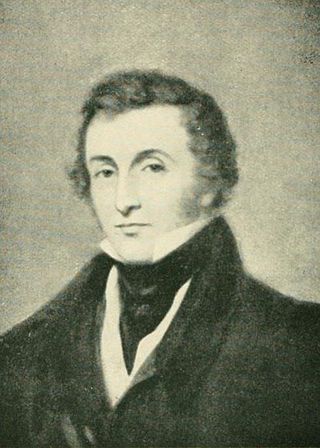
Sir William Jardine, 7th Baronet of Applegarth FRS FRSE FLS FSA was a Scottish naturalist. He is known for his editing of a long series of natural history books, The Naturalist's Library.
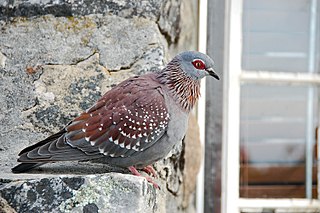
The speckled pigeon, also African rock pigeon or Guinea pigeon, is a pigeon that is a resident breeding bird in much of Africa south of the Sahara. It is a common and widespread species in open habitats over much of its range, although there are sizable gaps in its distribution. It is sometimes referred to as the Guinea pigeon due to its similar coloring to some species of guineafowl.

The green imperial pigeon is a large forest pigeon. The large range extends from Nepal, southern India and Sri Lanka eastwards to southern China, Indonesia and the Philippines.

The emerald dove or common emerald dove, also called Asian emerald dove and grey-capped emerald dove, is a widespread resident breeding pigeon native to the tropical and subtropical parts of the Indian Subcontinent and Southeast Asia. The dove is also known by the names of green dove and green-winged pigeon. The common emerald dove is the state bird of the Indian state of Tamil Nadu. The Pacific emerald dove and Stephan's emerald dove were both considered conspecific.

The Pompadour green pigeon, Sri Lanka green pigeon or Ceylon green pigeon is a pigeon in the genus Treron. In Sri Lanka, this bird and several other green pigeon are known as bata goya in the Sinhala language. It is found in the forests of Sri Lanka. Many authorities split the species from the pompadour green pigeon complex.
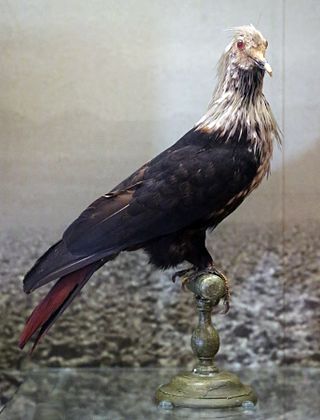
The Mauritius blue pigeon is an extinct species of blue pigeon formerly endemic to the Mascarene island of Mauritius in the Indian Ocean east of Madagascar. It has two extinct relatives from the Mascarenes and three extant ones from other islands. It is the type species of the genus of blue pigeons, Alectroenas. It had white hackles around the head, neck and breast and blue plumage on the body, and it was red on the tail and the bare parts of the head. These colours were thought similar to those of the Dutch flag, a resemblance reflected in its French common name, Pigeon Hollandais. The juveniles may have been partially green. It was 30 cm (12 in) long and larger and more robust than any other blue pigeon species. It fed on fruits, nuts, and molluscs, and was once widespread in the forests of Mauritius.

The Birds of America is a book by naturalist and painter John James Audubon, containing illustrations of a wide variety of birds of the United States. It was first published as a series in sections between 1827 and 1838, in Edinburgh and London. Not all of the specimens illustrated in the work were collected by Audubon himself; some were sent to him by John Kirk Townsend, who had collected them on Nathaniel Jarvis Wyeth's 1834 expedition with Thomas Nuttall.

The blue-spotted wood dove or blue-spotted dove is a species of bird in the family Columbidae. It is abundantly present throughout Africa south of the Sahel; it is partially present in East Africa and absent in southern Africa.

The spotted green pigeon or Liverpool pigeon is a species of pigeon which is most likely extinct. It was first mentioned and described in 1783 by John Latham, who had seen two specimens of unknown provenance and a drawing depicting the bird. The taxonomic relationships of the bird were long obscure, and early writers suggested many different possibilities, though the idea that it was related to the Nicobar pigeon prevailed, and it was therefore placed in the same genus, Caloenas. Today, the species is only known from a specimen kept in World Museum, Liverpool. Overlooked for much of the 20th century, it was recognised as a valid extinct species by the IUCN Red List only in 2008. It may have been native to an island somewhere in the South Pacific Ocean or the Indian Ocean, and it has been suggested that a bird referred to as titi by Tahitian islanders was this bird. In 2014, a genetic study confirmed it as a distinct species related to the Nicobar pigeon, and showed that the two were the closest relatives of the extinct dodo and Rodrigues solitaire.


The expedition members were:
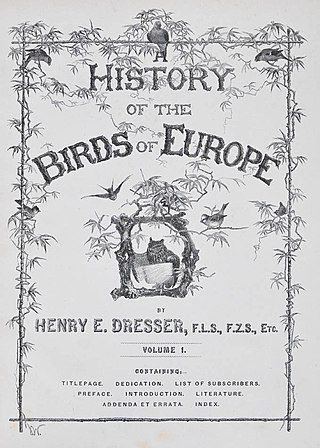
A History of the Birds of Europe, Including all the Species Inhabiting the Western Palearctic Region is a nine-volume ornithological book published in parts between 1871 and 1896. It was mainly written by Henry Eeles Dresser, although Richard Bowdler Sharpe co-authored the earlier volumes. It describes all the bird species reliably recorded in the wild in Europe and adjacent geographical areas with similar fauna, giving their worldwide distribution, variations in appearance and migratory movements.

A Century of Birds from the Himalaya Mountains was an ornithological book published by John Gould between 1830 & 1832.
This page is based on this
Wikipedia article Text is available under the
CC BY-SA 4.0 license; additional terms may apply.
Images, videos and audio are available under their respective licenses.















